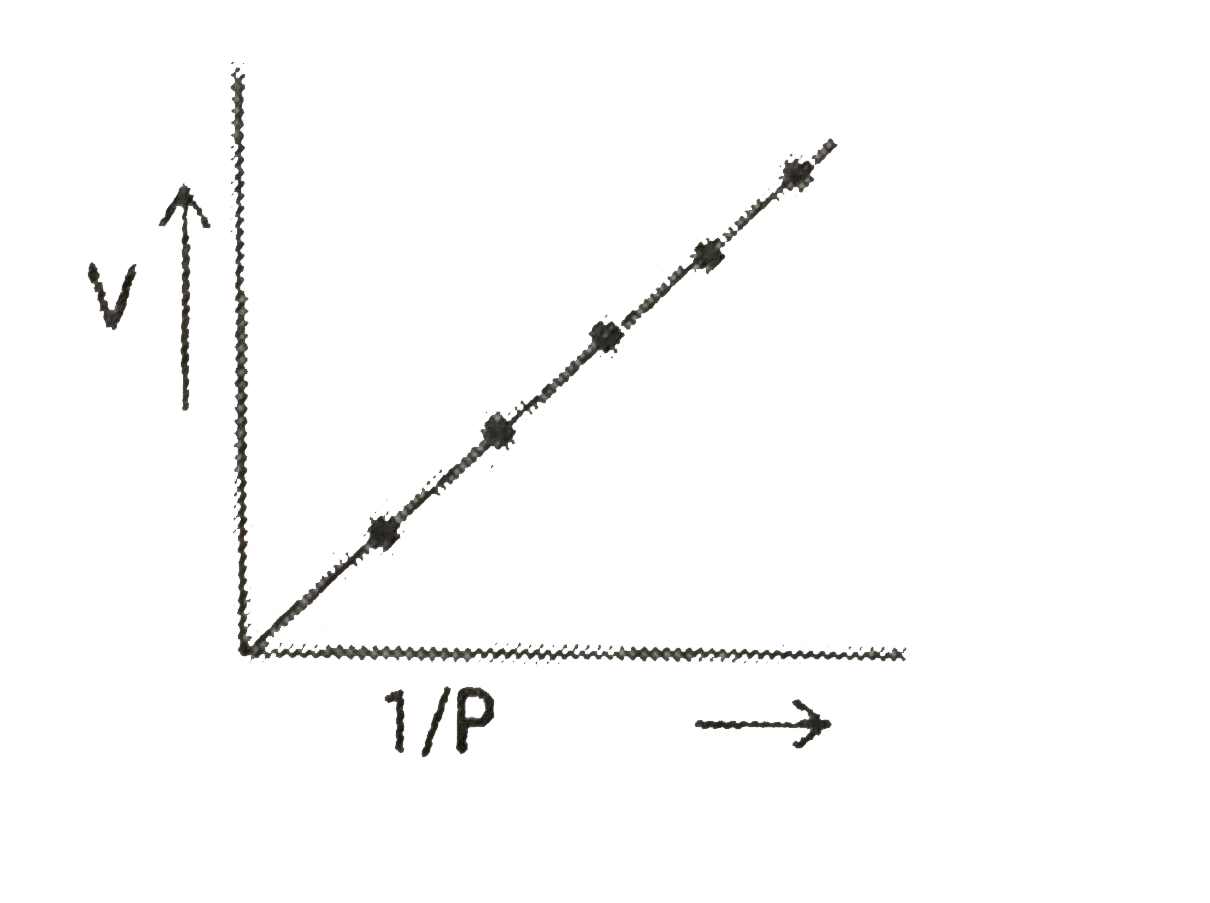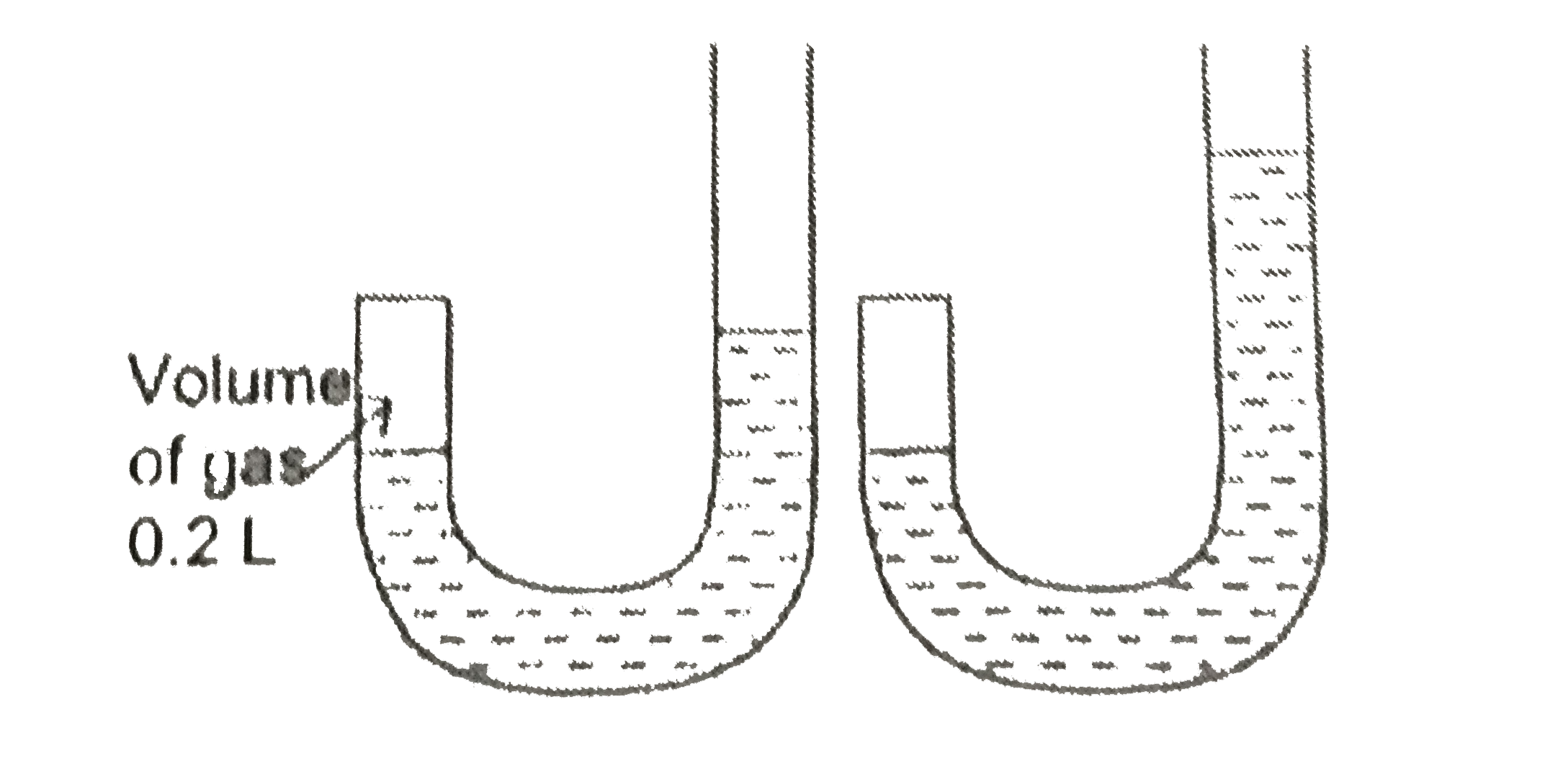Complete Solutions to EXAMPLE of chapter MOLE CONCEPT, STOICHIOMETRY AND BEHAVIOUR OF GASES of Class 10 book with complete answers and questions
| Class 10 | CHEMISTRY |
| Chapter | MOLE CONCEPT, STOICHIOMETRY AND BEHAVIOUR OF GASES |
| PEARSON IIT JEE FOUNDATION | EXAMPLE |
| Number Of Questions | 44 |
| Academic Year | 2023-24 |
The formula of a metal phosphide is `M_(3)P_(2)`. Identify formulae of the
(i) metal oxide (ii) metal nitrite (iii) metal bicarbonate
View SolutionMetal M forms two oxides A and B in which the ratio of the number of ozygen atoms to the total number of atoms present in the molecule is ` 3 : 5 and 1 : 2`, respectively. Determine the formiulae of A and B.
View Solution5 L of methane gas at 2 atm pressure is compressed to ` 1 .6` L at contant temperature. Calculate the final pressure.
View SolutionThe pressure of a certain volume of a gas is reduced to half of its initial pressure at contant temperature. Calculate its new volume.
View SolutionAt a certain pressure , the volume occupied by a given mass of a gas is 10 L at `0^(@) C`, calculate the volume occupied by the gas at `91^(@) C` at the same pressure.
View SolutionCalculate the temperature at which the volume of a given mass of gas gets reduced to 3/5th of original volume at `10^(@)C` without any change in pressure.
View SolutionGas laws are universally applicable for all gases whereas such universal laws could not be established for solids and liquids. Comment on this statement.
View SolutionBoyle's law states that at constant temperature, If pressure is Increased on a gas, volume decreases and vice-versa. But when we fill air in a balloon, volume as well as pressure Increase. Why ?
View SolutionWhy is Kelvin temperature always positive ?
View SolutionA certain mass of a gas taken in 1 L cylinder exerts a pressure of 500 mm Hg at a certain temperature. If the gas is transferred to another cylinder where it exerts 20 per cent more pressure, calculate the volume of the cylinder at the same temperature.
View SolutionThe slope of a given straight lime graph with constant temperature is found to be 0.2 L atm at 5 atm pressure. Calculate the volume of gas at that pressure.

View SolutionJ-shped tube closed at one end was used by Boyle to study the relationship between the pressure of the trapped gas and its volume. Such a set up is given here. Initially some amount of gas is taken in the tube and mercury is poured in it. The volume of the gas is 0.2 L and the difference in the height of the mercury column is 760 mm of Hg. Now, some more amount of mercury is poured and the difference in the height of the mercury column is found to be 1140 mm of Hg. Calculate the new volume of the gas considering the temperature constant.

View SolutionA cylinder was filled with a gas at 2 atm pressure at `27^(@)C` and can withstand a pressure of 12 atm. At what temperature the cyliner bursts when the building catches fire?
View SolutionAfter usage for a certain period, a cooking gas cylinder gas cylinder was considered to be empty, as no gas was coming out of it. Is the cylinder empty in its true sense? Explain what happens if the cylinder is kept in hot water or shaken vigorously. Explain by applying kinetic molecular theory.
View SolutionCalculate the number of moles of sodium (Na) atoms present in ` 11.5` g of sodium.
View SolutionCalculate the number of moles of water `(H_(2)O)` present in 4.5 g of water.
View SolutionCalculate the number of molecule present in ` 16.8` L of gas 'X' at STP. Also determine its gram molecular weight if the above sample weighs `26.625` g.
View SolutionCalculate the volume occupied by 200 g of `SO_(3)` gas at STP and the number of molecules present in it.
View SolutionWhat is the volume occupied by `30 1 xx 10^(23)` molecules of carbon dioxide gas at STP? Calculate the mass of this gas.
View SolutionVolume occupied by 16 g of oxygen is same as that occupied by 1 of hydrogen under similar conditions of temperature and pressure. Explain.
View SolutionX' grams each of nitrogen and carbon monoxide are considered. Draw a compartion with respect to number of moles.
View SolutionA ges at a pressure of 2.0 atm is heated from 0 to `273^(@) C` and the volume compressed to 1/4th of its original volume. Find the final pressure.
View SolutionIf a gas occupies 30 L at `27^(@)C` and 1 atm, what volume would it occupy at `227^(@)C` and 5 atm?
View SolutionWhat is the volume occupied by 30 g of neon gas at `67^(@)C` and 750 mm of Hg?
View SolutionA 2 L flask contains 22 g of carbon dioxide and 1 g of helium at `20^(@)C` . Calculate the partial pressure exerted by `CO_(2)` and He if the total pressure is 3 atm.
View SolutionWhat is the ratio of the rate of diffusion of helium gas to that of oxygen under identical conditions?
View SolutionA gas with molecular formula `C_(n)H_(2n + 2)` diffuses through a porous plug at a rate `1//6th` of the rate of diffusion of hydrogen gas under similar condtition. The formula of the gas is:
View SolutionA certain amount of oxygen is prepared by the thermal decomposition of potassium chlorate and is collected by downward displacement of water. The pressure of the gas collected is measured with the help of a manometer. The pressure recorded is found to be more than the pressure recorded for the same volume of oxygen cylinder containing same amount of oxygen under the same conditions. How do you account for this deviation?
View SolutionWhat is the molarity of a solution containing 15 g of NaOH dissolved in 500 mL of solution?
View SolutionA solution is prepared by dissolving `9.8" g of "H_(2)SO_(4)` in 54 g of water. What is the mole fraction of `H_(2)SO_(4)`?
View SolutionWhat is the percentage by weight of sulphuric acid, if 13 g of `H_(2)SO_(4)` is dissolved to make 78 g of solution?
View SolutionIf 40 g of ethyl alcohol is dissolved in 50 mL of water, then calculate the weight/volume percentage of ethyl alcohol present in the solution. (density of ethyl alcohol = 0.8 g/mL)
View SolutionWhat is the molarity of `25%(w/v)` solution of HCl?
View SolutionSpecific grabvity of 84% (w/w) pure `HNO_(3)` is 1.54. What volume of `HNO_(3)` is required to prepare one litre of 0.5 M `HNO_(3)` solutions?
View SolutionThe empirical formula of a compound is `CH_(2)O`. If its vapour density is 90, find out the molecular formula of the compound.
View SolutionMost jewellary is made of 22 carat gold. What is the percentage of golid in it ?
View SolutionCalculate the weight of zinc required for the liberation of 10 g of hydrogen gas on reaction with `H_(2)SO_(4)`.
View SolutionCalculate the weight of sodium bicarbonate to be dissociated to give `0.56` L of `CO_(2)` gas.
View SolutionCalculate the volume of carbon monoxide gas required to react with oxygen to give `11.2` L of `CO_(2)` gas.
View SolutionCalculate the weight of 80% pure limestone required to produce 11 g of `CO_(2)` gas.
View SolutionCalculate the amount of sodium oxide formed when 2.3 g of sodium reacts with 3.2 g of oxygen.
View SolutionA mixture of sodium carbonate and sodium bicarbonate was subjected to heating. Some loss in weight was found. How does this information help us to find out the composition of mixture?
View SolutionIn an apparatus, 16.8 g of sodium bicarbonate was subjected to heating till it underwent complete decomposition, what is the expected loss in weight? When the same apparatus was fitted to a condenser, the loss in weight was different from the earlier loss in weight. Justify the difference.
View SolutionAt STP, a certain amount of hydrogen is produced by the reaction of 550 g of impure zinc with excess amount of HCl. The same volume of hydrogen at STP reduces `Fe_(3)O_(4)` and produces 336 g of iron. Find the percentage of zinc. (Atomic mass of Zn is 65)
View Solution
EXAMPLE questions and complete solutions for chapter MOLE CONCEPT, STOICHIOMETRY AND BEHAVIOUR OF GASES of PEARSON IIT JEE FOUNDATION of Class 10